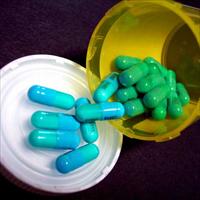Top ten most underreported humanitarian stories of 2007 - Drug-resistant tuberculosis spreads as new drugs go untested

Every year, tuberculosis (TB) kills an estimated two million people and another nine million develop the disease. In spite of the rising human toll, there have been no advances in treatment since the 1960s and the most commonly used diagnostic test—sputum smear microscopy—was developed in 1882 and only detects TB in half of the cases.
An estimated $900 million is needed annually for research and development for TB, but only $206 million is invested worldwide. Existing treatments and diagnostics are even less adapted for people living with HIV/AIDS, the easiest prey for the TB bacilli. And for those who become infected with multidrug-resistant TB (MDR-TB) — more than 450,000 people every year — or develop it as a result of incomplete treatment, the prospects for survival are even bleaker. The only guarantee for the few who are able to access treatment for MDR-TB is up to 24 months of ingesting a daily cocktail of highly toxic and expensive drugs that often trigger violent side effects.
In MSF programs in Armenia, Abkhazia, Georgia, Cambodia, Kenya, Thailand, Uganda, and Uzbekistan, even under the best conditions, only 55 percent of MDR-TB patients completed the 18 to 24 month treatment. The remaining proportion died, did not improve, or stopped treatment altogether because of side effects. Adding to the frustration for medical staff on the TB pandemic's front line is the fact that not all new drugs are being tested in the neediest patients — those with MDR-TB.
A recent article authored by international experts and published in the open-source medical journal PLoS Medicine, called for the testing of new drugs in patients whose TB is resistant to standard treatment. This approach could make it easier to detect anti-TB activity of new drugs and ultimately accelerate drug development.
 Back and Next - Back and Next
Back and Next - Back and Next See Also - See Also
See Also - See Also